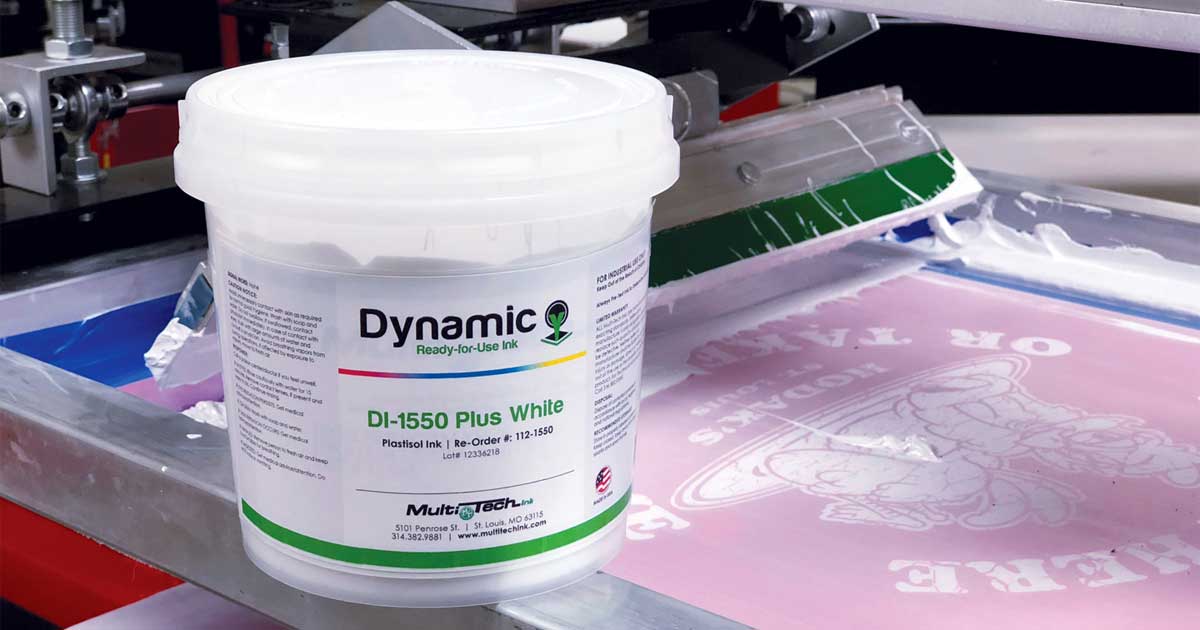The Keys to Finding Great Screen Printing Supplies
Choosing the best plastisol screen printing ink is important to getting great screen prints on t-shirts, hoodies and everything in between. White plastisol ink is the most commonly used screen printing ink. No matter whether you are a part-time hobby printer operating out of your garage, or using manual screen printing presses or automatic machines, having the best white plastisol ink is important.
White screen printing ink serves many purposes. First, it acts as an underbase for other ink colors. Underbasing creates a bright and bold screen printed shirt that stands out. Second, white ink is for printing a vibrant design that can hold its own without color, or compliment a beautiful multi-color screen print design. Finally, your screen printing white ink should be able to act as a highlight to accentuate your print. Since finding the best white ink is very important, below are some key factors in finding the best one that works for you.
What is Your White Ink Purpose: Mixing versus Printing A mixing white, like Transparent Dynamic White, is meant to be mixed with other color inks as part of a Pantone formulation and color mixing set. This means you want your mixing white ink to be a little less opaque since the pigments of the other color mixing inks to come through. For most print shops, a dedicated mixing system is not necessary.
If you need to just lighten the color of an ink you have, mix in a little regular white ink, like Dynamic Ink (DI) 1550 Plus, with whatever color you have. Start with a small amount, mix and judge the results. Use a clean ink mixing bucket. Remember, it is always easier to keep lightening than to try and make it darker.
White Ink When Screen Printing on Polyester With polyester and 50/50 garments, the best white inks will be low cure inks. Low-cure inks cure (or dry) around 280 degrees, instead of the traditional 320 degrees. It is important to keep the temperature of your conveyor dryer as low as possible to avoid dye-migration. Dye migration happens when polyester and some 50/50 t-shirts are exposed to heat over 290 degrees. If a polyester shirt is exposed to this high heat, the dye in the fabric turns into a gas and migrates through the ink, causing it to turn colors. Using a low cure plastisol ink like Dynamic (DI) Ink prevents dye migration because you can set your tunnel dryer to a lower temperature.
Many low cure inks also have low-bleed properties in them. The best, and most versatile white plastisol screen printing inks are both low bleed and low cure. These two properties make the ink an effective dye bleed blocker so it can be used as both an underbase, a printing and highlight white.
White Ink When Screen Printing Cotton Printing There is a big difference when screen printing on cotton versus polyester. You want to use a white ink that is formulated specifically for cotton. With cotton, dye migration is not as big of an issue but cheaper cotton shirts will have fibrillation (fibers sticking up). Your screen print will not look as good with t-shirt fibers sticking through it. The best cotton white inks are heavy enough to prevent any fibers from poking up through your screen print.
A good cotton white ink like MCO-1560, was created to be printed specifically on cotton and is commonly used as an underbase on dark garments so other colors can be printed on top of this white and show more brilliantly than they would without the white underbase.
Picking the Best White Screen Printing Ink You just learned how there are different factors to consider when looking for the perfect plastisol white ink. This means that screen printers like yourself might need to stock more than one type of white ink so you have the perfect white for every type of t-shirt. Using the best screen printing white ink for any shirt job you print is important enough to get the right ink.







